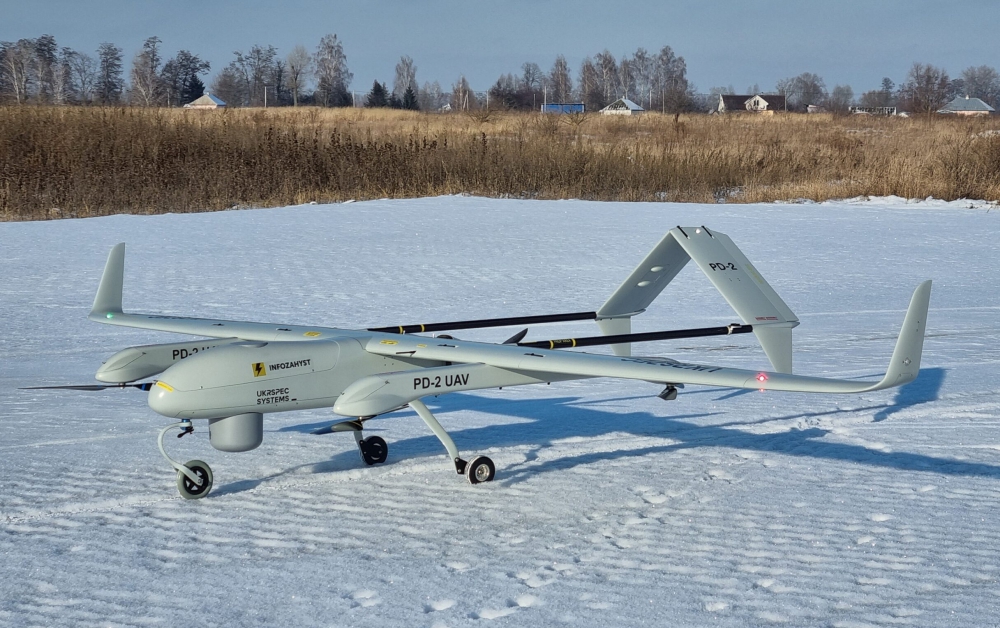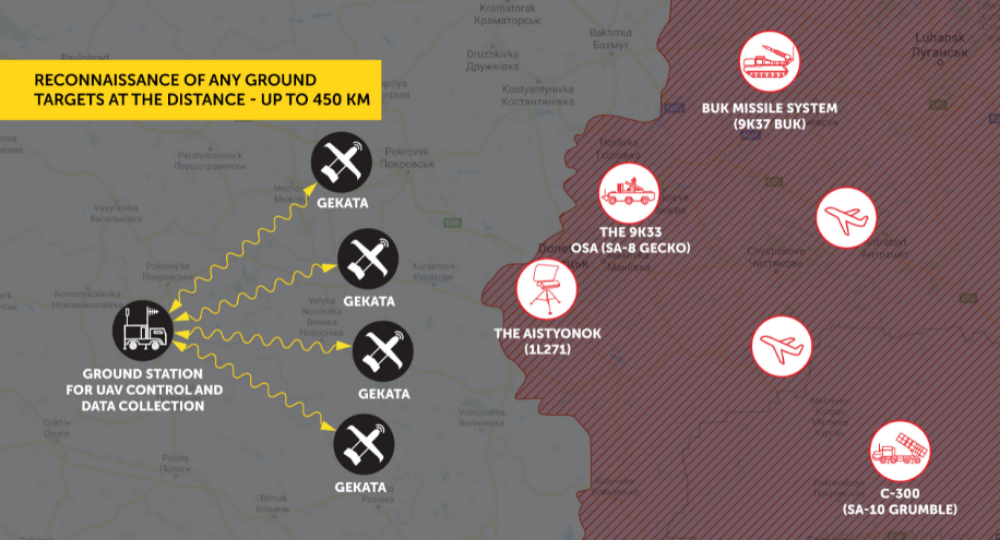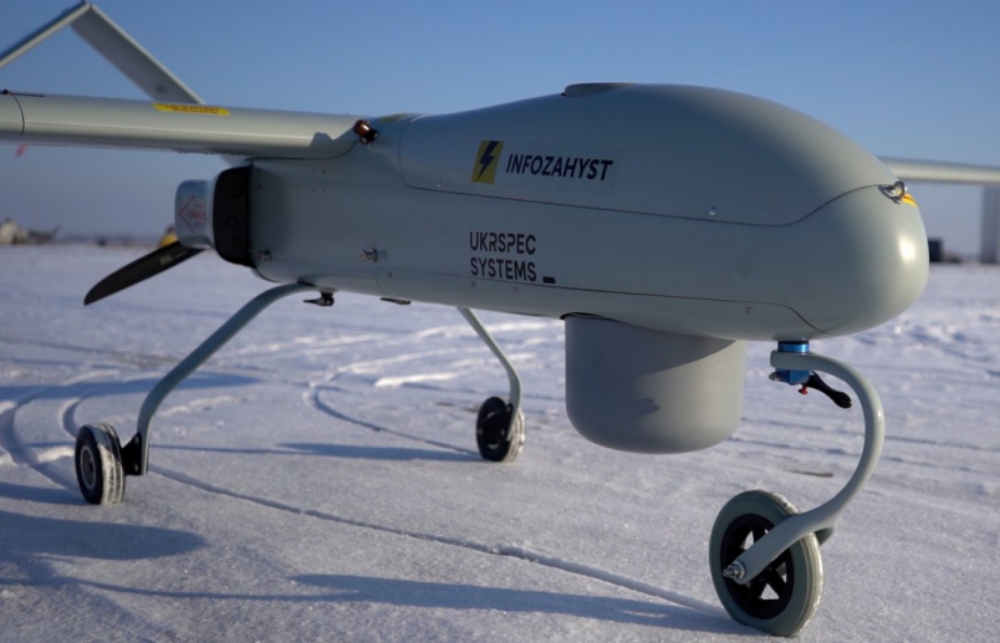Ukraine’s Infozakhist Research and Production Center test flew the Gekata radio reconnaissance unmanned system for the first time recently, from a small resort near Kiev.
The system comprises eight Ukrspecsystems PD-2 drones — four active and four spares — and a ground control station. Each drone carries with it an Infozakhist radio technical intelligence box suspended with the aircraft’s body tracking “signal pulses from the radar stations, electronic warfare support measures, anti-craft warfare, and airplanes.”
The system can reconnoiter a ground target from a distance of up to 450 kilometers (278 miles) and is capable of detecting radio signals from ground and air sources in real-time. The drone’s small size — its wingspan is five meters (16 feet) — in comparison to an aircraft-based electronic intelligence also makes it harder to detect.
Tracks Up to 200 Targets Simultaneously
The platform can track up to 200 targets simultaneously and processes up to 2.5 million impulses per second. Moreover, it comes at a fraction of the cost of a traditional Airborne Warning And Control System (AWACS).
The director of the scientific and production center at Infozahist, Yaroslav Kalinin, explained in a previous Defense Express interview that
“by placing 10-kg (22 lbs) containers with equipment on several UAVs [unmanned aerial vehicle], we create a mobile reconnaissance network that begins to perform the same functions as bulky ground complexes. But now we are not tied to the terrain, that is, we can look into every hole of enemy positions. In fact, we use a drone network to do what AWACS aircraft are used for.”
The Infozahist Research Center can create a “swarm” of UAVs allow replacing “classic” radio reconnaissance aircraft or a network of RTR ground stations, such as the Kolchuga.
The PD-2 can stay in the air for about 10 hours and rise to a height of 5 km, the range of drone control is more than 220 km. In addition to the traditional aircraft, has a VTOL version, when with the help of two additional sections it is able to take off and land vertically. This allows permits operation even from unprepared sites.
Sources: Defense Express; The Defense Post




Bad naming. That would not be an AWACS UAS but an ELINT UAS
Nevertheless, thank you for your work here